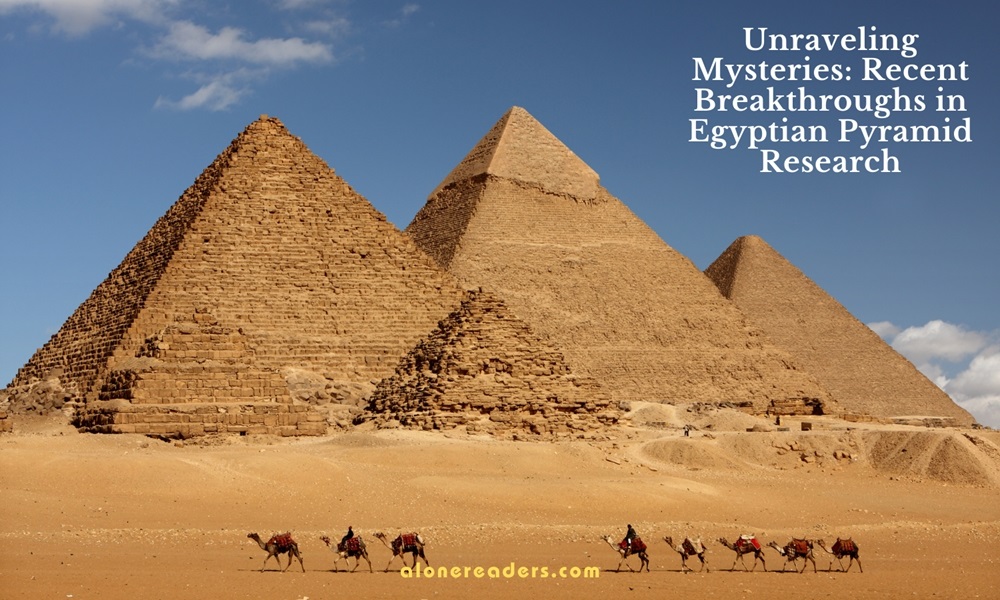
The Egyptian Pyramids stand as one of humanity’s greatest architectural feats, embodying not just monumental construction skills but also the rich and complex history of ancient Egypt. Recent discoveries and technological advancements have brought to light new information about these awe-inspiring structures, offering a fresh perspective on their construction, purpose, and the civilization that built them.
For centuries, the Pyramids, especially the Great Pyramid of Giza, have been shrouded in mystery. How were they built? What purposes did they serve? Recent research and archaeological findings have begun to unravel some of these mysteries. One of the most significant advancements in understanding pyramid construction has come from the discovery of a 4,500-year-old papyrus in the seaport Wadi al-Jarf. The oldest papyrus ever found in Egypt, it includes details about the construction of the Great Pyramid. Written by an overseer named Merer, it describes the transportation of limestone from the Tura quarries to Giza.
The use of modern technology has also shed light on the internal structure of the pyramids. For instance, the ScanPyramids project has utilized non-invasive techniques like infrared thermography and muon radiography to discover new chambers and corridors within the Great Pyramid. These findings suggest that there might be more to the pyramid than previously thought, possibly even hidden chambers that are yet to be discovered.
Another fascinating discovery has been the uncovering of a large, previously unknown void above the Grand Gallery in the Great Pyramid. This void, detected through cosmic-ray based imaging, has sparked a plethora of theories about its purpose and contents. Some experts suggest it could be a chamber used to reduce the weight on the Grand Gallery, while others speculate it might hold clues to the construction techniques used by the ancient Egyptians.
The role of the pyramids as tombs has also been re-evaluated in light of new findings. While it's well-known that they were built as monumental tombs for pharaohs, recent discoveries have shown that their function was far more complex. The discovery of elaborate burial goods, boats, and even satellite pyramids indicate that the Egyptians viewed the pyramids as part of a larger spiritual journey for the pharaohs in the afterlife. This is further evidenced by the intricate hieroglyphics found in the Pyramid Texts, some of the oldest religious texts in the world.
Another area of research that has advanced our understanding of the pyramids is the study of the workers who built them. It was once believed that the pyramids were built by slaves; however, recent excavations have revealed that the laborers were actually skilled workers who lived in a nearby temporary city. Discoveries of their living quarters, bakeries, and breweries suggest that the workers were well-fed and looked after, a sign of the importance of their work.
The alignment and positioning of the pyramids have also been a subject of intense study. The precise alignment of the pyramids with the cardinal points and their astronomical connections are not accidental. Studies have shown that the Egyptians possessed advanced knowledge of astronomy. The alignment of the Giza pyramids with the stars of Orion’s Belt, for instance, aligns with the belief in the connection between the pharaohs and the divine.
Furthermore, the construction techniques used to build the pyramids continue to be a subject of fascination. While the use of levers, ramps, and manpower is well-documented, the exact methods are still debated among experts. The recent discovery of a ceremonial boat near the Great Pyramid suggests that the Nile may have played a more significant role in transporting materials than previously thought.
The study of the materials used in the construction of the pyramids has also revealed much about the economic and political landscape of ancient Egypt. The sourcing of limestone, granite, and basalt from distant quarries shows the extensive trade networks and the organizational prowess of the ancient Egyptians.
In conclusion, the Egyptian Pyramids continue to be a source of fascination and mystery. The recent discoveries and technological advancements have opened new avenues for understanding these ancient wonders. They not only shed light on the construction and purpose of the pyramids but also provide a window into the lives of the people who built them, the pharaohs for whom they were built, and the civilization that thrived around them. As research continues, it is certain that the pyramids will reveal more of their secrets, continuing to captivate and educate us about the enigmatic world of ancient Egypt.